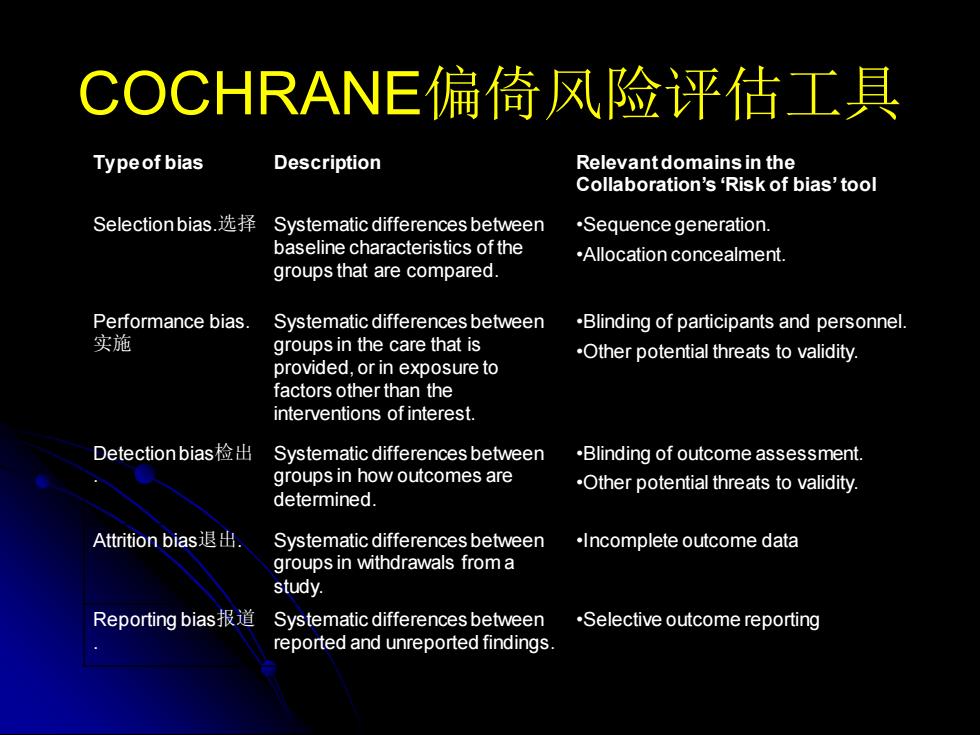正在加载图片...

COCHRANE偏倚风险评估工具 Typeof bias Description Relevantdomains in the Collaboration's'Risk of bias'tool Selection bias.选择 Systematic differences between .Sequence generation. baseline characteristics of the .Allocation concealment. groups that are compared. Performance bias. Systematic differences between .Blinding of participants and personnel. 实施 groups in the care that is .Other potential threats to validity. provided,or in exposure to factors other than the interventions of interest. Detection bias Systematic differences between .Blinding of outcome assessment. groups in how outcomes are .Other potential threats to validity. determined. Attrition bias.退出 Systematic differences between .Incomplete outcome data groups in withdrawals from a study. Reporting bias:报道 Systematic differences between .Selective outcome reporting reported and unreported findings. COCHRANE偏倚风险评估工具 Figure 8.6.b: Example of a ‘Risk of bias graph’ figure Type of bias Description Relevant domains in the Collaboration’s ‘Risk of bias’ tool Selection bias.选择 Systematic differences between baseline characteristics of the groups that are compared. •Sequence generation. •Allocation concealment. Performance bias. 实施 Systematic differences between groups in the care that is provided, or in exposure to factors other than the interventions of interest. •Blinding of participants and personnel. •Other potential threats to validity. Detection bias检出 . Systematic differences between groups in how outcomes are determined. •Blinding of outcome assessment. •Other potential threats to validity. Attrition bias退出. Systematic differences between groups in withdrawals from a study. •Incomplete outcome data Reporting bias报道 . Systematic differences between reported and unreported findings. •Selective outcome reporting Table 8.4.a: A common classification scheme for bias •